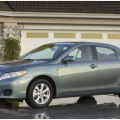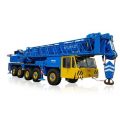A brand-new truck driver who has just finished school is immediately faced with the decision of going to work as an employee or striking out as an independent contractor. The latter choice carries with it some tremendous expenses that have to be met long before the trucker ever carries his/her first load. Insurance is one of those expenses. Unfortunately, insurance woes are now reducing the ranks of America’s owner-operators.
The driver who goes to work for a company like C.R. England does not have to worry about buying insurance. C.R. England handles that for him/her. The owner-operator doesn’t have that luxury. He or she must carry a certain amount of liability insurance at bare minimum. Cargo insurance may also be required depending on the cargo carried and the routes traveled. And even when cargo insurance is not required, it’s foolish to work as an independent contractor without it.
The problem is that insurance costs have surged over the last few years. According to a Trucks.com report, a liability policy that cost$7,000 just five years ago can cost twice that much today. Trucks.com says it is not unheard of for insurance companies to push the $20,000 mark. Their report even profiled one new driver who couldn’t find anything for less than $43,000 annually.
What is Driving Higher Prices?
Truck insurance is similar to car insurance in some ways but drastically different in others. Let’s start with the similarities in order to determine just what’s driving the higher prices truckers are now facing.
Both truck and car insurance premiums are based primarily on risk. In other words, a driver who presents a greater risk for making future claims is subject to higher premiums. A driver whose vehicle poses a greater risk for injury or death as resulting from an accident also pays higher premiums.
Truck insurance is naturally more expensive because there is more risk involved. The simple act of putting on more miles automatically increases the driver’s risk, and the size and weight of an 18-wheeler increases the risk of serious injury and death in the event of an accident.
As for the differences between truck and car insurance, one need look only at federal regulations. Trucking is one of the most heavily regulated industries in the U.S. Furthermore, those regulations directly affect how much truck drivers pay for insurance.
Part of the formulation for determining premiums involves looking at a driver’s record in relation to federal mandates. A new driver who has no history is automatically classified as high risk because his or her insurance company has no data to look at.
Something Has to Change
The trucking industry is desperately short of qualified drivers. Depending on whose statistics you believe, the current shortage could be upwards of 50,000 drivers or more. The situation is not being helped by an insurance environment that is preventing new drivers from setting up shop as independent contractors.
Some of those new drivers are opting to work for companies like C.R. England instead. But how many others are abandoning their hopes of becoming truck drivers because their desire to be self-employed has been crushed by exorbitantly high insurance premiums?
Something has to be done to bring the cost of insurance down for owner-operators. They simply cannot continue to compete while paying such high prices. So what can be done? That’s up to the insurance industry to figure out. But where there’s a will there is also a way. That means the only question is whether the will to bring down insurance costs is actually there.






























No Comments
Leave a comment Cancel